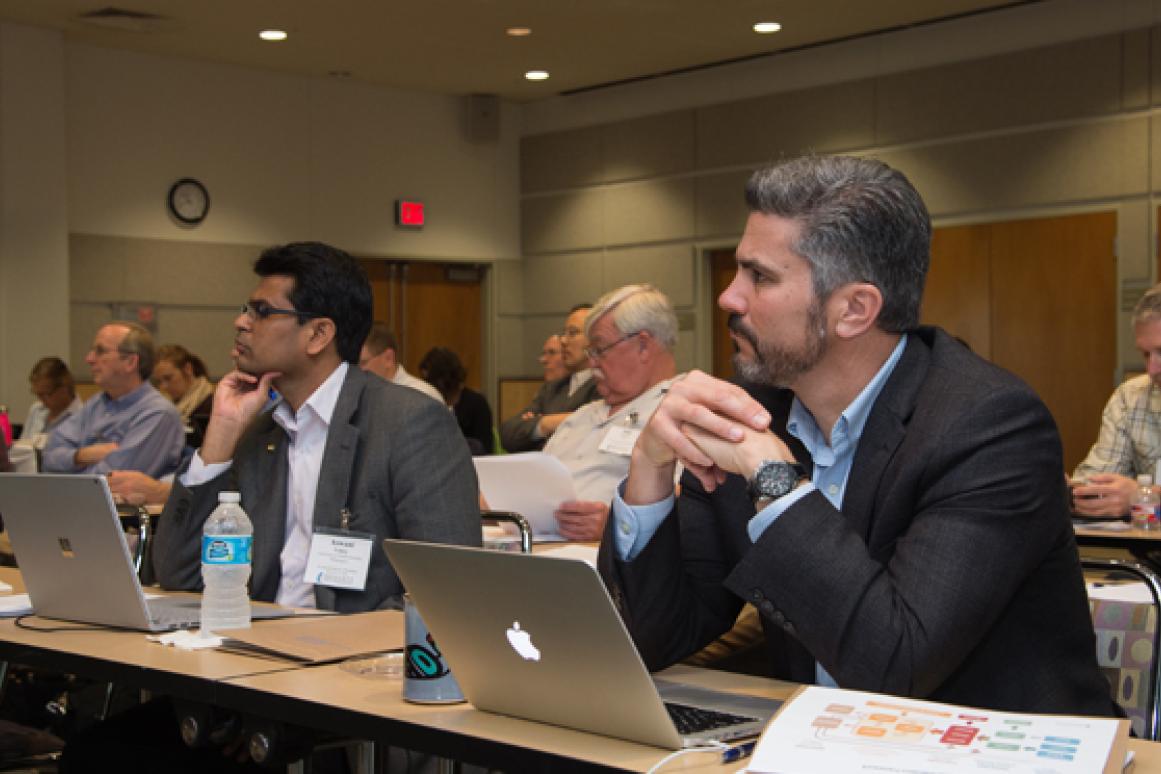Gulf of Mexico Report Card to Track and Share Health Gets Underway

More than 40 scientists from across the Gulf Coast gathered at the Harte Research Institute (HRI) for Gulf of Mexico Studies this month to kick off a new initiative that will assess the health and wellbeing of the Gulf of Mexico and develop a report card that tracks it.
The Gulf of Mexico is among the most ecologically diverse and valuable ecosystems in the world, but its health is being challenged by habitat loss, overfishing, oil spills, hypoxia off the coast of the Mississippi River, and global climate change, among other things. The Gulf EcoHealth Metrics will be a scientifically-based representation of the environmental condition of the Gulf designed to be widely accessible and readily understandable by policy-makers, stakeholders, scientists, and most importantly, the American public.
The opening workshop, hosted March 9-11, brought a diverse group of researchers from across the Gulf Coast to HRI to discuss the framework for this Gulf report card and dive deeper into four metrics that will give a picture of Gulf health:
- Coastal birds
- Fisheries
- Oyster reefs
- Seagrasses
Dr. Mark Harwell, of Harwell Gentile & Associates, LC., led the workshop.

After selecting these four areas as a representation of the vast array of life and habitat in the Gulf, scientists drilled down to determine the best metrics: What species? What data?
“This foundational work will provide the framework to create a report card for the entire Gulf of Mexico,” said HRI Executive Director Dr. Larry McKinney. “The initial workshop identified the metrics needed to assess the ecological health of the Texas coastal and marine waters. Next steps will include workshops on developing ecosystem service indicators; partitioning the Gulf into representative segments for evaluation; and determining the suite of indicators that will be best represent the Gulf as a large marine ecosystem.”
The report card is scheduled for completion by August 2017.
The idea for a Gulf of Mexico report card was conceived by McKinney and HRI Endowed Chair of Biodiversity and Conservation Science Dr. Wes Tunnell, who each had the idea separately and then joined forces. Both men felt the concept of putting a grade on the Gulf would help the public to better understand its health. How healthy is the Gulf was a common question from the public and the media, McKinney said, particularly after the Deepwater Horizon oil spill.
And after the spill, the need to understand and document the Gulf’s health became more urgent as the federal government invested billions of dollars in spill fines into an unprecedented environmental restoration effort.
“This is a chance for us to have a scientifically-based metric to judge the health of the Gulf of Mexico and the success — or failure — of any planned future restoration,” Tunnell said.

McKinney and Tunnell connected with Harwell and Dr. John H. Gentile who had been involved in system-wide assessment and restoration efforts in the Florida Everglades; and Dr. William C. Dennison and Dr. R. Heath Kelsey of the University of Maryland Center for Environmental Science, who created a report card ranking the health of the Chesapeake Bay system, the Great Barrier Reef and, most recently, the Mississippi River.
In addition to the Gulf report card project kicked off in March, a smaller study funded by the National Oceanic and Atmospheric Administration’s Restore Act Science Program with the Mission-Aransas National Estuarine Research Reserve will study Gulf health and ecosystem services. Ecosystem services refers to the concept of putting costs to the human benefits derived from the environment to better understand the value of an environment to humans.
Meetings for the Mission-Aransas initiative will begin in April. Working in tandem, these two efforts will show how Gulf EcoHealth Metrics can provide a picture of health at different scales.
